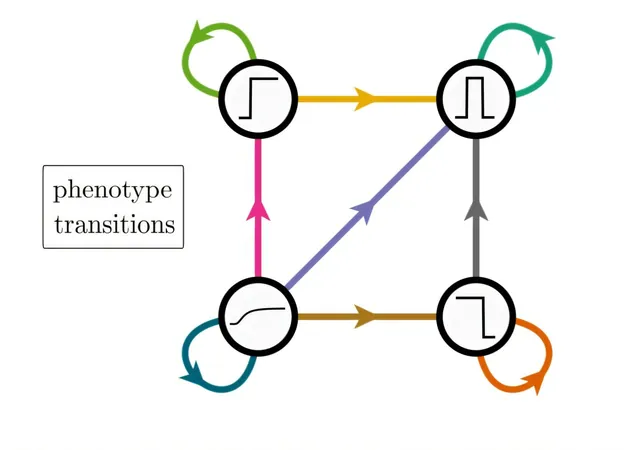
Unraveling the Secrets of Evolution: How Gene Networks Shape Life’s Diversity
2025-09-16
Author: Nur
The Mystery of Development in Living Organisms
Ever wonder how the incredible diversity of life unfolds within organisms? The answer lies in how cells determine their fate during development. This fascinating process is fundamentally guided by spatial patterns that form the basis of segments, organs, and even unique markings like stripes and spots. Surprisingly, despite the vast differences in form across the animal kingdom, the underlying mechanisms that create these intricate body plans share remarkable similarities.
Gene Regulatory Networks: The Architects of Life
For years, researchers have recognized the vital role of gene regulatory networks—complex webs of genes controlling other genes—in orchestrating these patterns. However, the evolution of these networks and how they adapt to create new patterns remains relatively uncharted territory.
Decoding Evolutionary Patterns: A New Approach
Zena Hadjivasiliou, head of the Mathematical and Physical Biology Lab at the Crick Institute, is leading the charge in unraveling this mystery. "We lack a complete understanding of how these patterning mechanisms evolve," she explains. When a novel feature, such as a butterfly's new eye spot, emerges, it does not appear from thin air. Instead, it evolves from the delicate rewiring of existing genetic frameworks. But what specific mutations trigger this transformation? And are there underlying rules dictating which new patterns can arise?
Unlocking Evolution: Insights from Simulation
In their latest research published in PRX Life, Hadjivasiliou's team dives deep into this inquiry. They explore whether certain mutations within patterning networks accelerate the emergence of new designs and if these changes lead to predictable evolutionary outcomes.
Harry Booth, a mathematician and computer scientist in the lab, crafted a cutting-edge computer simulation mimicking the natural evolution of gene networks. "By modeling how small groups of genes determine cellular fates based on their tissue locations, we can observe how minor changes can lead to major differences in spatial patterns," Booth says.
By running this simulation over 100,000 times, the team developed a statistical understanding of evolutionary trends. They discovered that while fine-tuning existing patterns is relatively simple, creating entirely new ones often requires significant upheaval—demonstrating that genuine innovation demands complex alterations in the genetic network.
History’s Influence on Evolution: The Unexpected Prediction
What about Stephen Jay Gould’s thought-provoking notion of replaying the 'tape of life'? Booth’s innovative analysis revealed something extraordinary: using a comprehensive dataset of evolutionary paths, he trained a machine learning model that could predict potential network designs in evolution. This showed that, despite the randomness of evolution, certain mutations can drastically alter its trajectory.
"History does indeed make its mark," Booth concludes, suggesting that specific mutations can create 'forks in the road' early in evolutionary history. These pivotal moments can reliably steer evolution toward distinct outcomes.
The Journey Ahead: Exploring New Frontiers in Evolution
The implications of this research are vast and profound. Following these revelations, the team aims to identify traces of the principles uncovered in their virtual evolution experiments within genetic data from organisms like fruit flies. As Booth optimistically puts it, "We've laid the groundwork for exciting new experiments to explore how these intricate evolutionary processes can lead to the emergence of novel patterns in nature."
In the quest to decode the wonders of evolution, the findings promise to shed light on how minor events can shape the rich tapestry of life as we know it.


 Brasil (PT)
Brasil (PT)
 Canada (EN)
Canada (EN)
 Chile (ES)
Chile (ES)
 Česko (CS)
Česko (CS)
 대한민국 (KO)
대한민국 (KO)
 España (ES)
España (ES)
 France (FR)
France (FR)
 Hong Kong (EN)
Hong Kong (EN)
 Italia (IT)
Italia (IT)
 日本 (JA)
日本 (JA)
 Magyarország (HU)
Magyarország (HU)
 Norge (NO)
Norge (NO)
 Polska (PL)
Polska (PL)
 Schweiz (DE)
Schweiz (DE)
 Singapore (EN)
Singapore (EN)
 Sverige (SV)
Sverige (SV)
 Suomi (FI)
Suomi (FI)
 Türkiye (TR)
Türkiye (TR)
 الإمارات العربية المتحدة (AR)
الإمارات العربية المتحدة (AR)